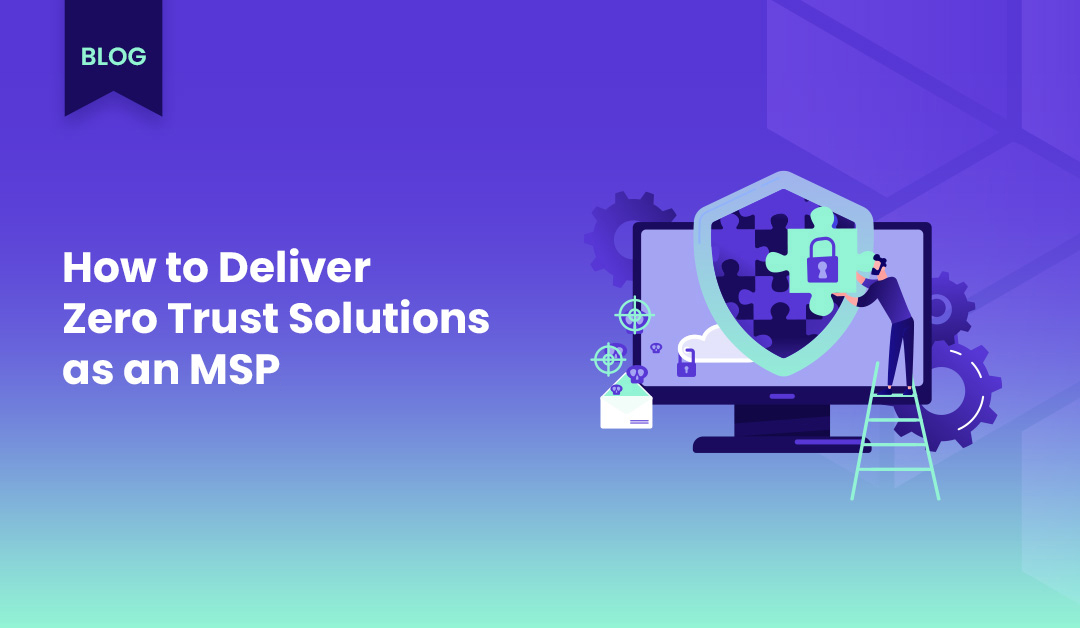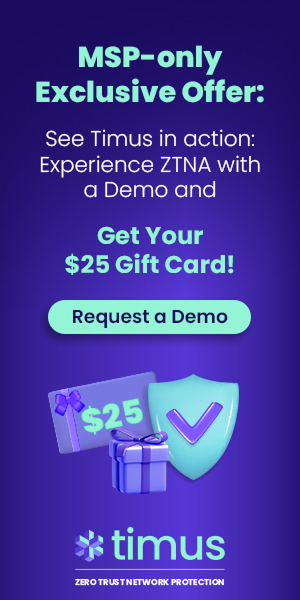Conquering the Castle: How MSPs Can Deliver Zero Trust Solutions
Fellow MSPs, assemble! The ever-shifting landscape of cybersecurity can feel like a treacherous maze, shrouded in jargon and riddled with challenges. The Zero Trust approach promises to be the exit, but deciphering its complexities can leave even the most seasoned IT warriors bewildered. Fear not! Join me on this epic quest as we equip ourselves to deliver Zero Trust solutions like champions, […]
Author
Date
Category
All Categories
- AI-powered security
- Attacks & Threats
- Cybersecurity
- Hybrid Cloud
- Network
- Network Firewall
- Network Protection
- News
- Remote Workforce
- Security
- Zero Trust
Contents
Popular Posts
Product
Join the Newsletter

Fellow MSPs, assemble! The ever-shifting landscape of cybersecurity can feel like a treacherous maze, shrouded in jargon and riddled with challenges. The Zero Trust approach promises to be the exit, but deciphering its complexities can leave even the most seasoned IT warriors bewildered. Fear not! Join me on this epic quest as we equip ourselves to deliver Zero Trust solutions like champions, slaying the dragon of cyberattacks before it breaches our clients’ digital walls.
Imagine the traditional security posture as a sleepy medieval castle. Gates hang open halfway through, some guards doze peacefully, and any rogue wanderer could stroll right in. Zero Trust flips the script entirely. We transform into vigilant knights, meticulously scrutinizing every individual – inside or outside – as potential adversaries. Think of a high-tech bank vault: biometric scans, multi-layered security systems, and access granted only to those who prove their legitimacy beyond a shadow of a doubt.
But how do we translate this philosophy into a tangible security strategy? Buckle up, MSP champions, for here’s your battle plan:
1. Scout the Terrain: Before charging in, knowledge is your most potent weapon
Conduct a thorough assessment of your client’s vulnerabilities. What sensitive data might lurk within their digital walls? What security measures are already in place, acting as makeshift defenses? This vital intel becomes your map, guiding you towards a personalized Zero Trust strategy that speaks directly to their specific needs.
2. Assemble Your Arsenal:
Equip yourself with the right tools, your trusty companions in this digital crusade. Multi-factor authentication (MFA) is your impenetrable shield, standardizing user access based on robust policies rather than outdated tribal knowledge. Identity and access management (IAM), enabling dynamic, contextual, and risk-based access policies that adapt to ever-changing threats. Endpoint security becomes your impenetrable armor, guarding devices against potential threats.
3. Train Your Troops:
Educate them on the core principles of Zero Trust, empowering them to be vigilant on digital defense. Teach them that trust must be earned and verified to access critical networking resources and apps. How to recognize suspicious activity, reporting it promptly, and understanding the critical role they play in securing their own digital kingdom are crucial skills. Remember, knowledge is power, everyone needs to be armed with the right information.
4. Deploy Strategically:
Start by identifying high-risk areas, sensitive financial data or confidential documents. Gradually expand your Zero Trust perimeter as you gain experience and confidence, securing the most valuable assets first before methodically fortifying the rest. Think of each layer of the stack strengthening and creating an impenetrable network.
5. Monitor and Adapt:
Maintaining a robust Zero Trust posture requires continuous vigilance and adaptation. This involves actively monitoring your implementation across various aspects, including user access behavior, network activity, and endpoint security posture. Regularly assess these insights to identify any weaknesses in your Zero Trust architecture, such as insufficient access controls, outdated endpoint security software, or inadequate user training. Once identified, be prepared to adapt your strategy accordingly. This might involve implementing additional multi-factor authentication protocols, updating endpoint security solutions, or conducting further user awareness training. Remember, the cyber threat landscape is constantly evolving, and so too must your Zero Trust strategy to ensure it remains effective in protecting your clients’ valuable data and resources.
Remember, heroes come in all shapes and sizes. You don’t need to be a cybersecurity wizard to deliver Zero Trust solutions. By understanding the core principles, equipping yourself with the right tools, and guiding your clients with a steady hand, you can become the champion they need.
Embrace Zero Trust, not just as a service, but as a partnership. Become a trusted security advisor, safeguarding yourself and your clients networks from the ever-present threats. Charge forth, MSP heroes! With the right knowledge and strategy, you can conquer the Zero Trust landscape.
Bonus Tip: Remember, clear communication is key. Don’t drown your clients in jargon. Explain Zero Trust in simple terms, focusing on the benefits:
- Reduced attack surface: Fewer potential entry points for attackers
- Standardized access control: Consistent and policy-driven access for all users.
- Dynamic access policies: Access adapts to risk and context, reducing unauthorized activity.
- Increased visibility: Clearer view of user activity for faster threat detection.
- Reduced lateral movement: Limits attackers’ ability to move freely within the network.
- Reduced cost of breaches: Minimizes damage and data loss from successful attacks.
- Improved compliance: Easier to meet regulatory requirements.
- Secured third-party access: Safeguards access for partners and vendors.
- Unified access control: Consistent policies for on-premises and remote users.
- Lowered detection time: Faster identification and response to security incidents.
By understanding these benefits and communicating them effectively, you can help your clients see the value of Zero Trust and become champions in their own right.
FAQ
Zero Trust is a security approach that assumes everyone, inside or outside the network, is a potential threat and requires continuous verification for access. Understanding it is crucial for MSPs to effectively protect their clients’ data and systems in today’s dynamic threat landscape.
The blog outlines a five-step process: Scout the Terrain: Assess client vulnerabilities and security measures. Assemble Your Arsenal: Choose the right tools like MFA, IAM, and endpoint security. Train Your Troops: Educate clients on Zero Trust principles and their role in security. Deploy Strategically: Start with high-risk areas and gradually expand. Monitor and Adapt: Continuously monitor and adapt your strategy to evolving threats.
The blog mentions several benefits, including: Reduced attack surface and unauthorized activity. Increased visibility and faster threat detection. Reduced lateral movement and cost of breaches. Improved compliance and secured third-party access. Unified access control for all users and locations.
Potential challenges include: Complexity of implementation and change management. Cost of tools and resources. User adoption and training requirements however, AOVPN (Always On Virtual Private Networks) create a seamless vpn solution by requesting less action from end users i.e. an MSP dream. Integrating with existing infrastructure.
The blog doesn’t provide specific resources, but industry publications, vendor websites, and online courses dedicated to Zero Trust security are recommended. The Timus website is an example among many. These are just a few examples, and you can tailor the questions and answers to your specific audience and the overall message of the blog post.
Get Started with Timus
Zero Trust. Adaptive Cloud Firewall. Secure Remote Access. In one.
